Welcome to the Illinois bird-watching experience! This guide helps identify over 400 species‚ featuring color photos‚ expert tips‚ and seasonal insights to enhance your birding adventures.
Overview of Illinois Bird Diversity
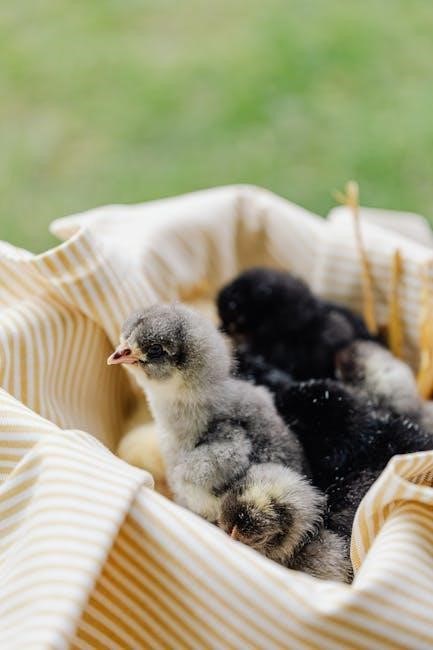
Illinois boasts a rich avifauna‚ with over 459 species documented‚ reflecting its strategic location along major migration routes. The state’s diverse habitats‚ from wetlands to forests‚ support a wide variety of birds. Seasonal changes bring different species‚ with warblers and tanagers in spring‚ waterfowl in fall‚ and hardy residents like chickadees in winter. Iconic birds like the Northern Cardinal and American Robin thrive in urban areas‚ while raptors like Bald Eagles and Red-tailed Hawks patrol the skies. This diversity makes Illinois a vibrant destination for birders‚ offering endless opportunities to explore and discover its feathered treasures.
Importance of Bird Identification
Bird identification is crucial for understanding and appreciating Illinois’ avifauna. Accurate identification enables birders to contribute to conservation efforts by monitoring species populations and habitats. It also aids in ecological studies‚ as birds play vital roles in pollination‚ seed dispersal‚ and insect control. Identifying birds fosters deeper connections to nature‚ encouraging environmental stewardship. Furthermore‚ it enhances birding experiences‚ allowing enthusiasts to track species lifecycles and migrations. Proper identification skills are essential for participating in citizen science projects‚ which inform conservation strategies. By mastering identification‚ birders can better advocate for bird-friendly policies and habitats‚ ensuring the long-term survival of Illinois’ diverse bird species.
Structure and Purpose of the Field Guide
This field guide is designed to help birders of all skill levels identify and understand the diverse bird species found in Illinois. Organized by bird families‚ it features detailed descriptions‚ high-quality images‚ and range maps to aid accurate identification. Each species entry includes information on plumage‚ behavior‚ and vocalizations‚ as well as habitat preferences and seasonal occurrences. The guide also provides tips for birding ethics and conservation. Its purpose is to serve as a comprehensive and accessible resource‚ fostering a deeper connection to Illinois’ avifauna while promoting responsible birding practices and environmental stewardship.
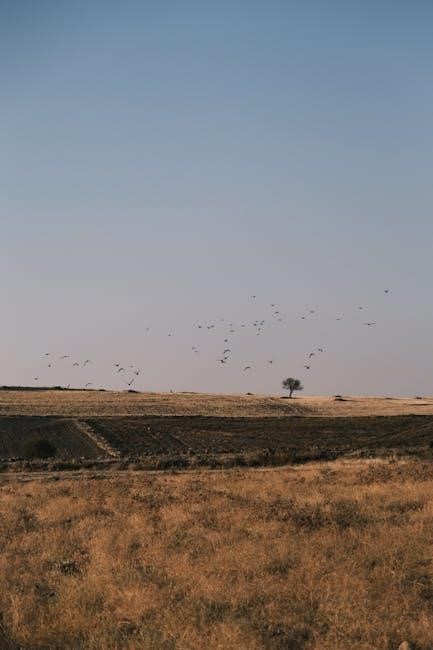
Bird Identification Tips
- Observe size‚ shape‚ and plumage details carefully.
- Note unique features like beak shape or tail length.
- Consider habitat and behavior for accurate ID.
- Listen to vocalizations and seasonal variations.
Visual Cues for Bird Identification
Bird identification often starts with visual cues. Note the bird’s size‚ shape‚ and plumage patterns‚ as these are key distinguishing features. Pay attention to coloration‚ markings‚ and feather textures‚ which can vary by species. Beak shape and size are also critical‚ as they often reflect a bird’s diet. Look for distinctive features like crests‚ eye rings‚ or wing bars. Seasonal plumage changes‚ such as breeding vs. non-breeding colors‚ can also aid in identification. Juvenile and adult birds may differ significantly‚ so familiarize yourself with these variations. Using visual cues effectively requires patience and practice to accurately identify Illinois bird species.
Behavioral Traits for Accurate ID
Behavioral traits are essential for accurate bird identification. Observe how birds move‚ forage‚ and interact. Flight patterns‚ such as fluttering‚ soaring‚ or diving‚ can reveal species. Note feeding behaviors: some birds hop on branches‚ while others probe the ground or skim water. Vocalizations‚ though not covered here‚ often align with specific actions. Social behaviors‚ like flocking or solitary habits‚ also provide clues. For example‚ sandpipers often run along shorelines‚ while kingfishers hover before diving. Paying attention to these traits helps distinguish similar species and enhances field identification skills for Illinois birders.
Seasonal Variations in Plumage
Birds in Illinois exhibit seasonal plumage variations‚ which are crucial for identification. Many species change their feather colors and patterns throughout the year. Breeding plumage often features vibrant colors to attract mates‚ while non-breeding plumage may appear duller. For example‚ the American Goldfinch transitions from bright yellow in summer to a subdued olive-gray in winter. Molting periods‚ when feathers are shed and regrown‚ can also alter a bird’s appearance temporarily. Understanding these changes helps birders accurately identify species during different times of the year‚ as some birds may look entirely different outside their breeding season.
Habitat Diversity in Illinois
Illinois offers diverse habitats‚ from forests and grasslands to wetlands and urban areas‚ supporting a wide variety of bird species adapted to these environments.
Forest Birds and Their Habitats
Illinois’s forests‚ including deciduous‚ mixed‚ and bottomland ecosystems‚ host a variety of bird species. Woodland birds like the Ovenbird‚ Black-and-white Warbler‚ and Scarlet Tanager thrive in shaded areas. Raptors such as the Cooper’s Hawk and Red-shouldered Hawk patrol forest edges. Woodpeckers‚ including the Pileated and Red-headed‚ rely on trees for nesting and foraging. Forest floors attract ground-dwelling birds like the Eastern Whip-poor-will and American Woodcock. Seasonal migrants‚ such as warblers and tanagers‚ pass through during spring and fall‚ while year-round residents like the Carolina Chickadee and Tufted Titmouse adapt to changing conditions. These habitats provide essential shelter‚ food‚ and breeding grounds for forest bird communities.
Grassland and Prairie Bird Species
Illinois’s grasslands and prairies are home to a variety of bird species that thrive in open habitats. The Eastern Meadowlark‚ known for its melodious song‚ is a common sight in these areas. The Dickcissel‚ with its distinctive markings‚ can be seen during its migratory periods. Bobolinks‚ recognized by their unique plumage‚ also inhabit these regions. Grasshopper Sparrows‚ preferring tallgrass environments‚ are frequent residents. These birds rely on grasslands for breeding‚ feeding‚ and shelter‚ making these ecosystems vital for their survival. The conservation of prairie habitats is essential for maintaining healthy populations of these avian species.
Wetland and Waterfowl Habitats
Illinois’s wetlands and waterfowl habitats support a diverse range of bird species‚ including ducks‚ geese‚ herons‚ and egrets. Migratory waterfowl such as the Mallard‚ Wood Duck‚ and Great Blue Heron rely on these areas for resting and feeding during seasonal journeys. The American Coot and Pied-billed Grebe are common residents‚ while shorebirds like the Killdeer and Spotted Sandpiper frequent wetland edges. Wetlands also provide critical breeding grounds for species like the American Bittern and Least Bittern. These habitats are essential for maintaining waterfowl populations‚ making them a focal point for birders and conservationists alike. Protecting these ecosystems ensures the survival of these avian treasures.
Urban and Backyard Birding Opportunities
Urban areas in Illinois offer surprising birding opportunities‚ with species adapting to city life. Backyards‚ parks‚ and green spaces attract birds like the American Robin‚ Northern Cardinal‚ and Blue Jay. Even small gardens can host visitors like the Black-capped Chickadee and Tufted Titmouse. Providing bird feeders‚ native plants‚ and water sources can enhance backyard birding experiences. Urban parks‚ such as Chicago’s Lincoln Park‚ are hotspots for migratory species like warblers and sparrows. Woodpeckers‚ such as the Downy and Hairy Woodpeckers‚ are common in urban woodlands. These environments highlight the resilience of birds and offer accessible birding for both beginners and experienced enthusiasts.
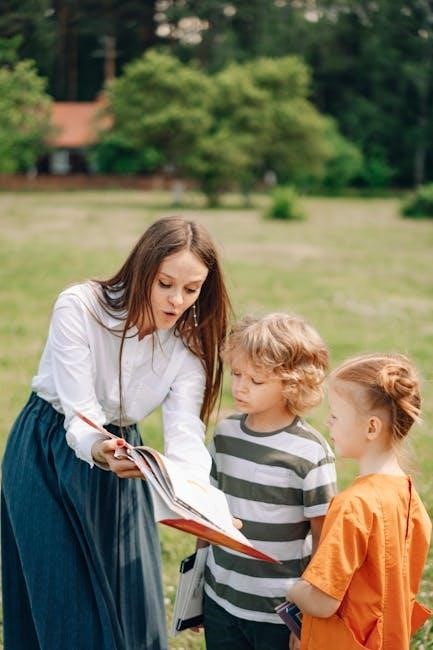
Seasonal Birding in Illinois
Illinois offers diverse birding experiences across seasons‚ with migratory patterns‚ breeding activities‚ and habitat changes shaping bird presence and diversity throughout the year.
Spring Migration Highlights
Spring migration in Illinois is a vibrant period‚ typically peaking in late April and early May. This season brings a surge of colorful songbirds‚ such as warblers and tanagers‚ as they return from southern wintering grounds. Waterfowl and raptors also make notable appearances‚ with species like broad-winged hawks and American golden-plovers passing through. Wetlands‚ forests‚ and backyards become hotspots for spotting these birds. Early mornings offer prime viewing opportunities‚ as birds refuel after their journeys. The diversity and energy of spring migration make it a thrilling time for both novice and experienced birders in Illinois.

Summer Breeding and Nesting
Summer is a bustling time for Illinois birds as breeding and nesting are in full swing. Species like the American Robin‚ Red-winged Blackbird‚ and Yellow Warbler establish territories‚ with males often singing to attract mates. Nesting sites vary; robins may nest in urban trees‚ while blackbirds prefer wetland vegetation. Raptors like Red-tailed Hawks build large nests in tall trees. Birders can observe active nests in forests‚ grasslands‚ and even backyards. This period offers great opportunities to see parental behaviors and young birds fledging. Pay attention to unique vocalizations and nesting materials for better identification.
Fall Migration Patterns
Fall migration in Illinois is a spectacular event‚ with many bird species traveling south to escape harsh winter conditions. Warblers‚ sparrows‚ and waterfowl are among the most notable migrants‚ with peak activity occurring from September to November. Key migration routes include the Lake Michigan shoreline and major rivers like the Illinois and Mississippi. Birds often flock together for safety‚ utilizing stopover habitats to rest and refuel. Wetlands and forests are critical for these travelers‚ offering food and shelter. Birders can observe diverse species during this period‚ making it an ideal time for spotting both common and rare migrants in the Prairie State.
Winter Birding and Year-Round Residents
Winter birding in Illinois offers a unique opportunity to observe hardy species that remain in the state year-round. Birds like the Black-capped Chickadee‚ Downy Woodpecker‚ and Northern Cardinal are common sightings‚ adapting to colder conditions by relying on backyard feeders. Other species‚ such as Snow Buntings and American Tree Sparrows‚ migrate to Illinois from northern regions‚ seeking milder winters. Year-round residents often exhibit different behaviors‚ such as flocking together for foraging or altering their diets to survive. Winter birding hotspots include forest edges‚ urban parks‚ and wetlands‚ providing ample chances to spot these resilient birds in their seasonal habitats.
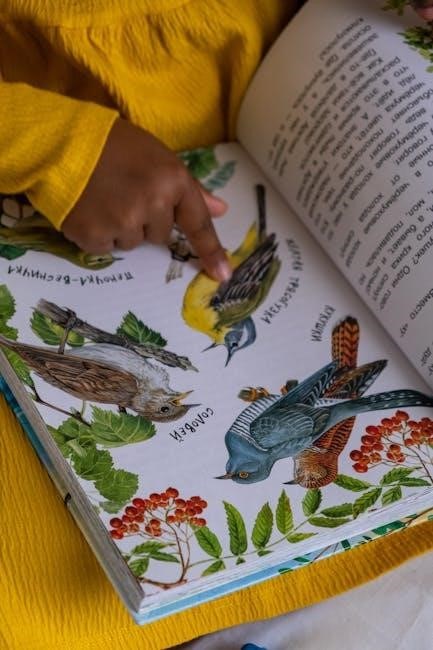
Birding Hotspots in Illinois
Illinois boasts renowned birding destinations‚ including state parks‚ wildlife refuges‚ and important bird areas. These spots attract diverse species and offer scenic landscapes for enthusiasts to explore.
Top Birding Locations in Northern Illinois
Northern Illinois is a haven for birdwatchers‚ with Montrose Point in Chicago being a standout location. This site is renowned for its migratory bird sightings‚ including rare species like the Black-crowned Night-Heron and Eurasian Wigeon. The Chicago Lakefront‚ particularly Maggie Daley Park and North Pond‚ offers excellent opportunities to spot waterfowl and songbirds. The Illinois River Valley and the Shawnee National Forest also host diverse avifauna. Prairie State Park‚ with its restored grasslands‚ attracts species like the Greater Prairie-Chicken and Upland Sandpiper. These locations cater to both seasoned birders and newcomers‚ making Northern Illinois a must-visit destination for bird enthusiasts.
Central Illinois Birding Sites
Central Illinois offers a mix of habitats that attract a wide variety of bird species. The Champaign County area‚ including the Jasper-Kansas State Wildlife Area‚ is a hotspot for waterfowl and shorebirds during migration. The Illinois River Valley provides excellent opportunities to spot species like the Prothonotary Warbler and American Woodcock. Lake Shelbyville and its surrounding forests are known for attracting migratory songbirds and raptors. The prairies and wetlands of McLean County are home to species such as the Greater Prairie-Chicken and Northern Harrier. These sites make Central Illinois a rewarding destination for birders exploring the region’s diverse ecosystems.
Southern Illinois Birding Destinations
Southern Illinois is a haven for birders‚ with its unique landscapes and diverse habitats. Shawnee National Forest is a premier destination‚ offering sightings of Cerulean Warblers and Wild Turkeys. The Cache River State Natural Area is renowned for its wetlands‚ where species like the American Bittern and Yellow-headed Blackbird thrive. Along the Mississippi River‚ bluffs and floodplains attract migratory birds‚ including Prothonotary Warblers and Belted Kingfishers. Winter brings waterfowl to areas like Horseshoe Bluff‚ while spring and fall migrations fill the skies with songbirds. These sites make Southern Illinois a must-visit for bird enthusiasts exploring the region’s rich avifauna.
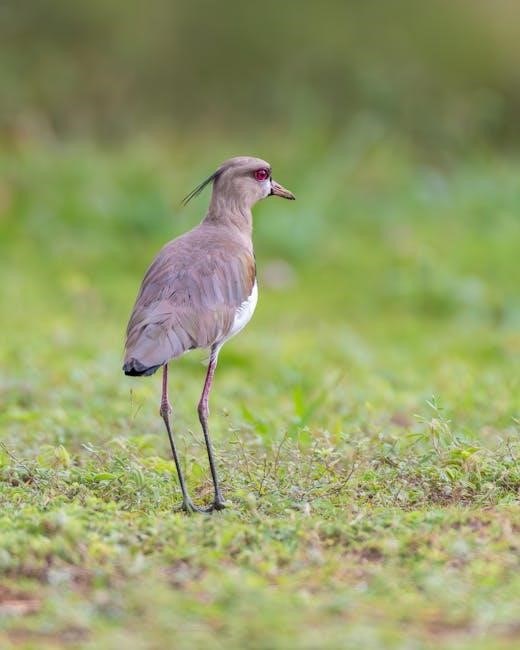
Conservation Efforts in Illinois
Illinois actively protects its avifauna through habitat restoration and species protection programs. Organizations like the Illinois Audubon Society and IDNR work to safeguard bird habitats and ecosystems.
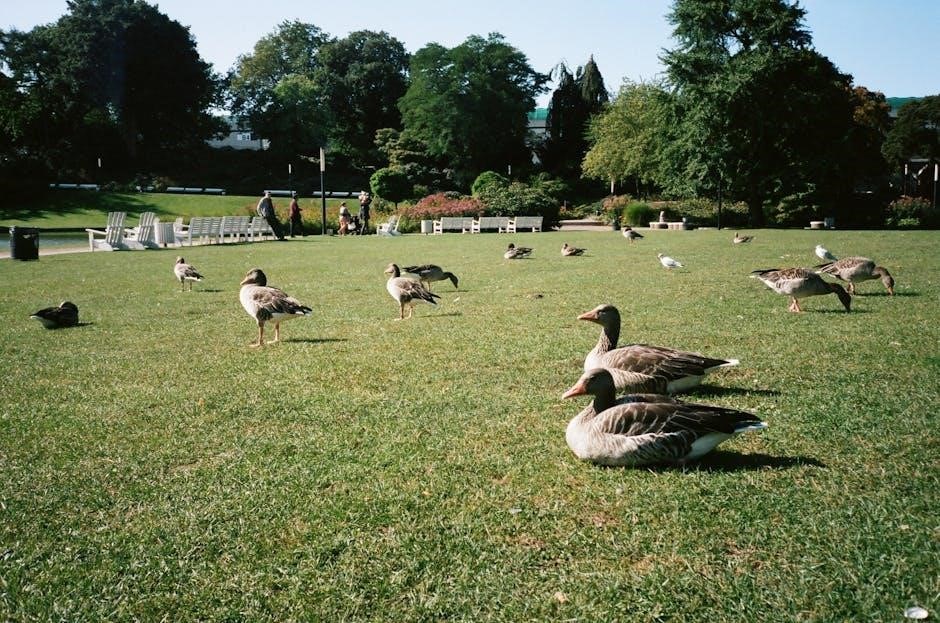
Threats to Illinois Bird Populations
Habitat loss‚ climate change‚ and pollution pose significant threats to Illinois bird populations. Urbanization and agricultural expansion have reduced natural habitats‚ while invasive species disrupt ecosystems. Climate change alters migration patterns and breeding cycles‚ making adaptation challenging.Pollution‚ including pesticides and plastic waste‚ further endangers birds. Collisions with buildings and wind turbines also contribute to mortality rates. Protecting critical habitats and addressing these threats are essential for preserving Illinois’ avifauna.
Role of Citizen Science in Bird Conservation
Citizen science plays a vital role in bird conservation by engaging the public in data collection and research. Programs like bird counts and species monitoring enable individuals to contribute to conservation efforts. Platforms such as eBird allow citizens to report sightings‚ providing valuable insights into population trends and migration patterns. This collective effort helps identify threats and inform policy decisions. Citizen science fosters community involvement‚ raising awareness about bird conservation and promoting stewardship of local ecosystems. By participating‚ individuals support scientific research and contribute to the protection of Illinois’ avifauna‚ ensuring a future for these species.
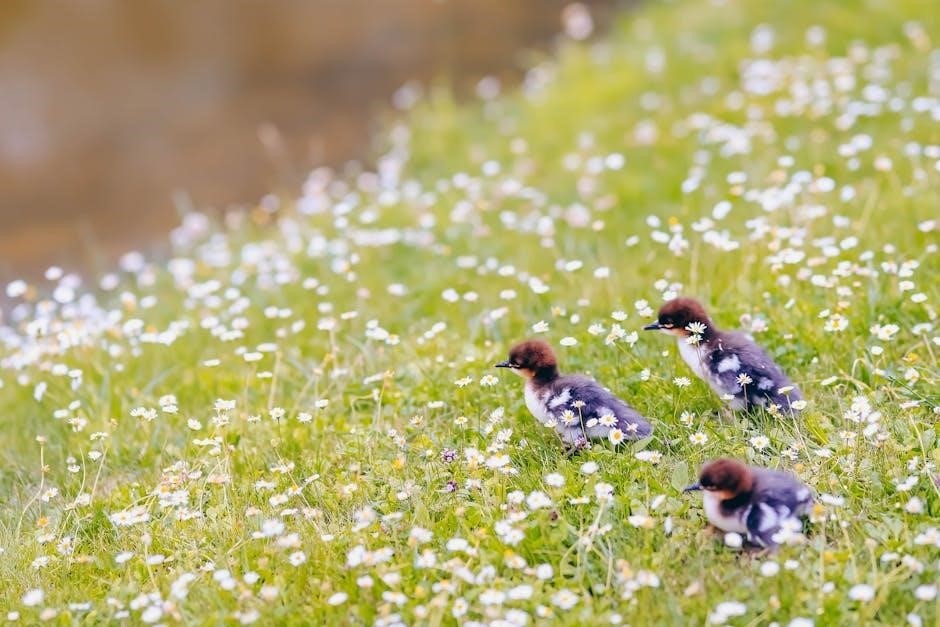
Resources for Birders
Essential tools for Illinois birders include detailed field guides‚ birding apps like eBird‚ and websites offering species profiles. Local birding clubs and workshops also provide valuable support.
Recommended Field Guides for Illinois Birders
For identifying birds in Illinois‚ essential field guides include the Sibley Guide to Birds and the National Audubon Society Field Guide to Birds. These resources provide detailed illustrations‚ species descriptions‚ and range maps specific to the Midwest. The Illinois Field Guide by the Illinois Natural History Survey is another excellent choice‚ offering localized insights. Additionally‚ digital apps like Merlin Bird ID and iBird Pro complement traditional guides with interactive features. These tools help birders of all skill levels accurately identify species based on plumage‚ size‚ habitat‚ and behavior‚ making them indispensable for a successful birding experience in Illinois.
Online Platforms for Bird Identification
Several online platforms are invaluable for identifying birds in Illinois. eBird‚ managed by the Cornell Lab of Ornithology‚ allows users to track sightings and explore species distributions. The Cornell Lab of Ornithology website provides detailed species accounts‚ photos‚ and audio recordings. Additionally‚ the Audubon Society’s Online Bird Guide offers a user-friendly interface with searchable features like size‚ color‚ and habitat. Lastly‚ AllAboutBirds.org is a comprehensive resource for identification‚ covering plumage‚ behavior‚ and vocalizations. These digital tools enhance field guide experiences‚ making bird identification more accessible and precise for Illinois birders.
Local Birding Communities and Clubs
Local birding communities and clubs play a vital role in fostering connections among Illinois birders. The Illinois Ornithological Society and Illinois Audubon Society are prominent organizations that organize birding events‚ workshops‚ and conservation efforts. Many regional clubs‚ such as the Chicago Ornithological Society‚ host guided bird walks and field trips. These groups provide valuable networking opportunities‚ allowing birders to share knowledge‚ sightings‚ and experiences. Joining these communities also supports local conservation initiatives‚ making them essential resources for both seasoned birders and newcomers eager to explore Illinois’s avifauna.
Birding in Illinois offers a rewarding journey through diverse landscapes and species. This guide equips you to explore‚ learn‚ and appreciate the state’s rich avifauna with confidence and joy.
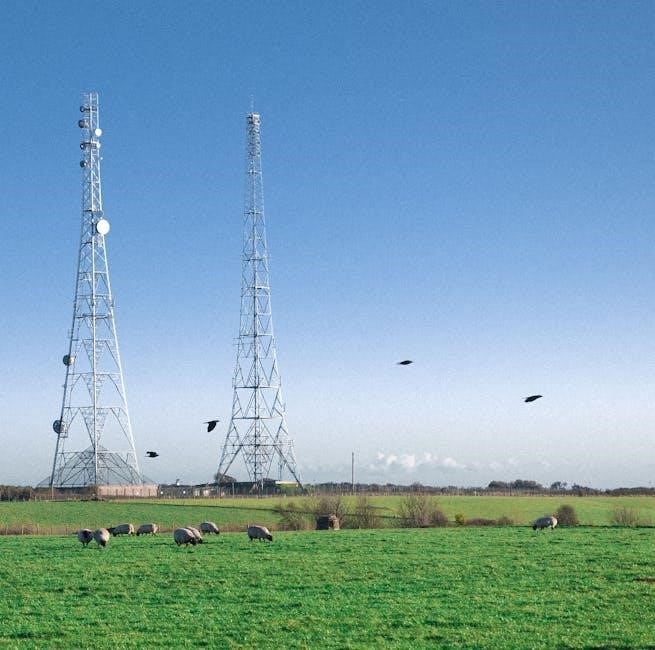
Final Tips for Successful Birding in Illinois
Always approach birding with patience and curiosity. Carry binoculars‚ a field guide‚ and a journal to record observations. Timing is key—dawn and dusk often yield the most activity. Respect habitats and birds‚ maintaining a safe distance to avoid disturbance. Seasonal awareness helps in identifying migrants and residents. Engage with local birding communities for tips and updates. Stay informed about conservation efforts to protect Illinois’ avifauna. Continuous learning enhances your skills‚ so embrace new challenges and enjoy the journey of discovery. Happy birding in Illinois’ diverse and vibrant landscapes!
Encouragement to Explore and Learn More
Birding in Illinois offers endless opportunities for discovery and connection with nature. Embrace the journey of learning‚ as each species tells a unique story of adaptation and survival. Explore diverse habitats‚ from forests to wetlands‚ to witness the state’s rich avifauna. Join local birding communities to share experiences and gain insights. Continuously update your knowledge with field guides and online resources to enhance your birding adventures. Remember‚ every observation contributes to a deeper appreciation of Illinois’ natural heritage. Keep exploring‚ learning‚ and enjoying the fascinating world of birds—there’s always something new to discover and cherish.
